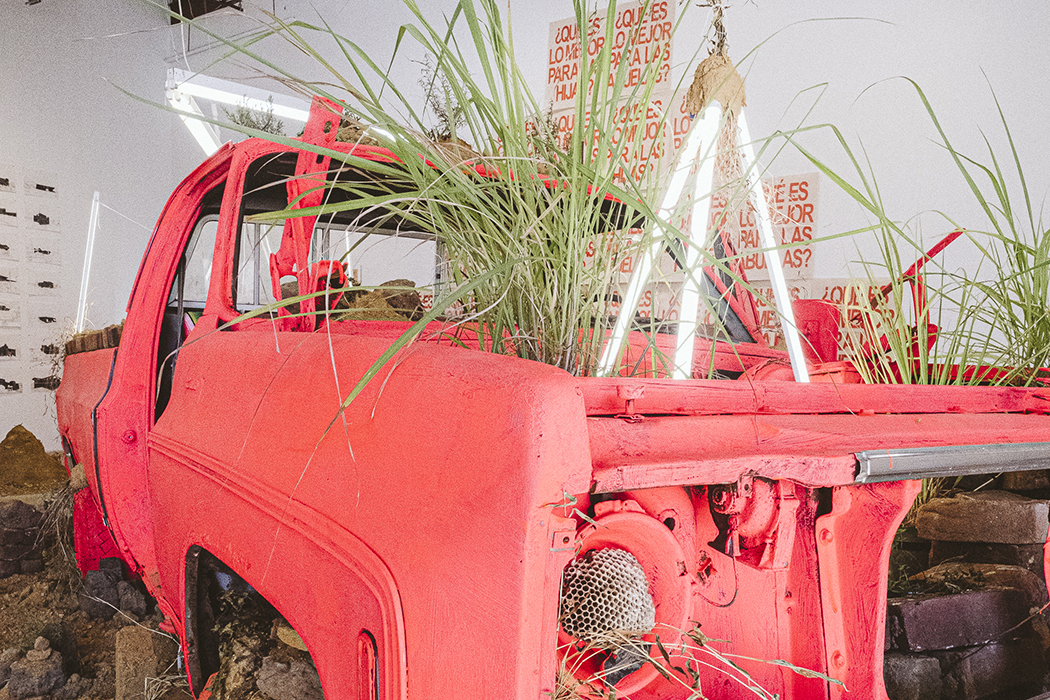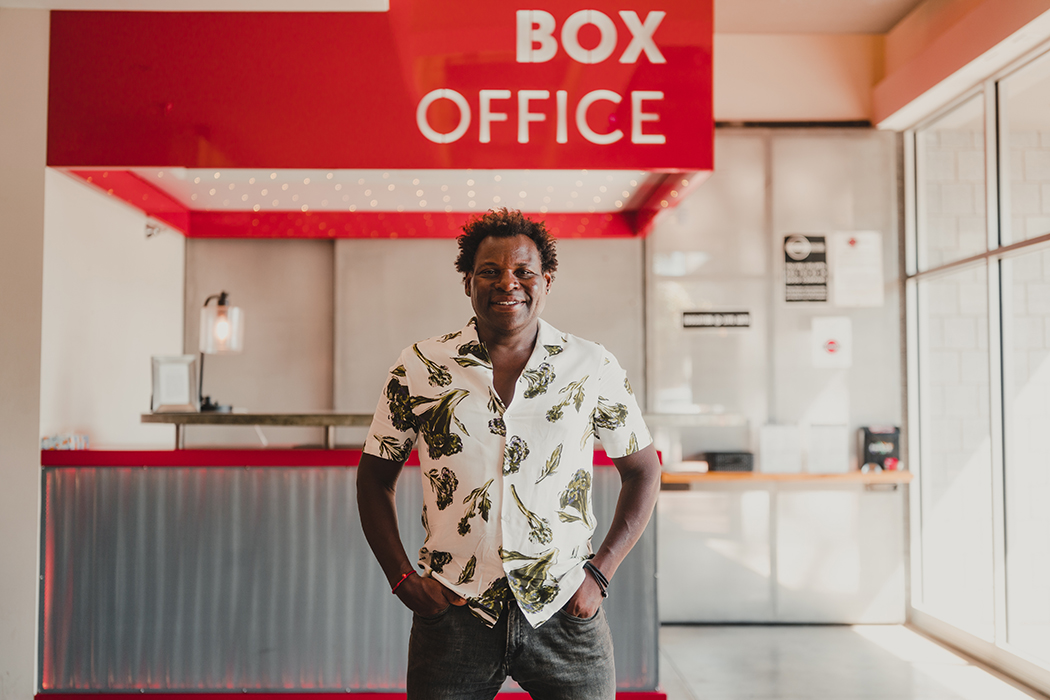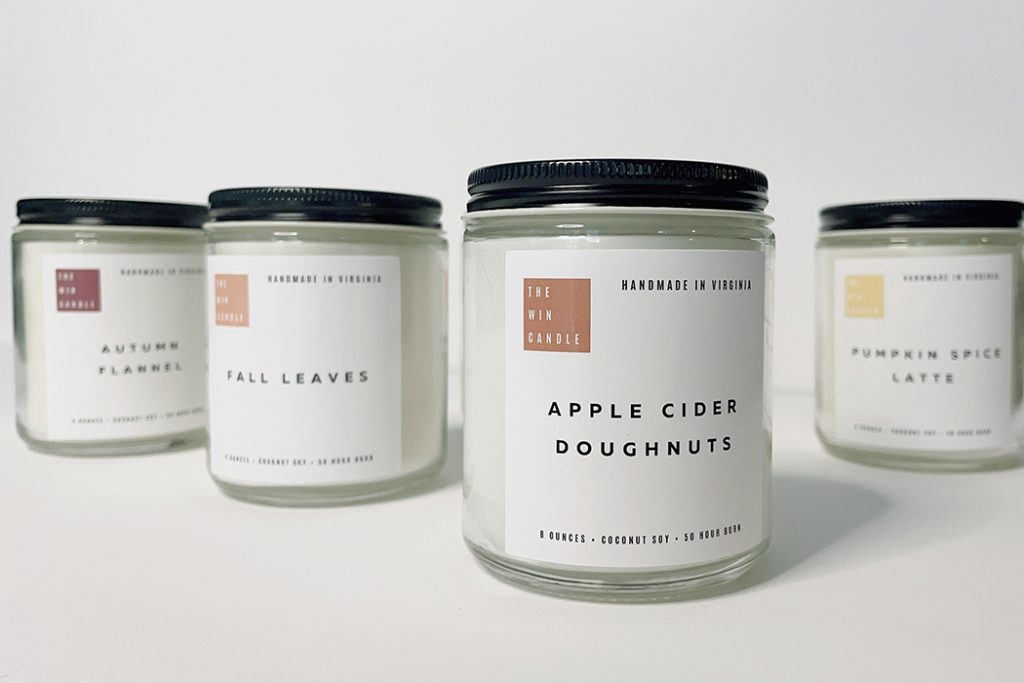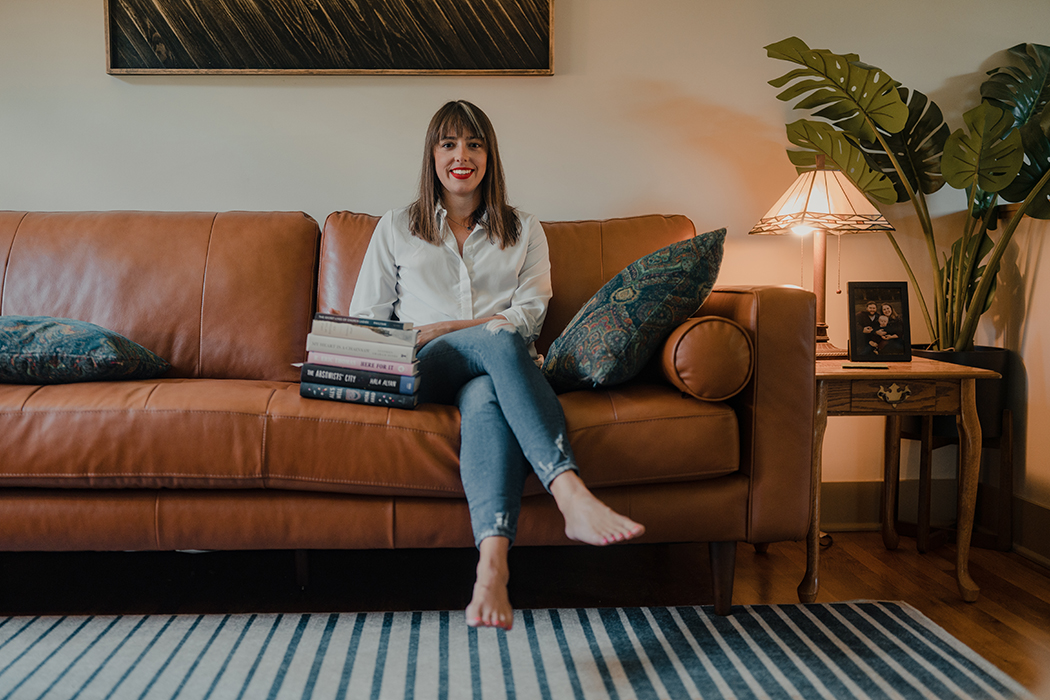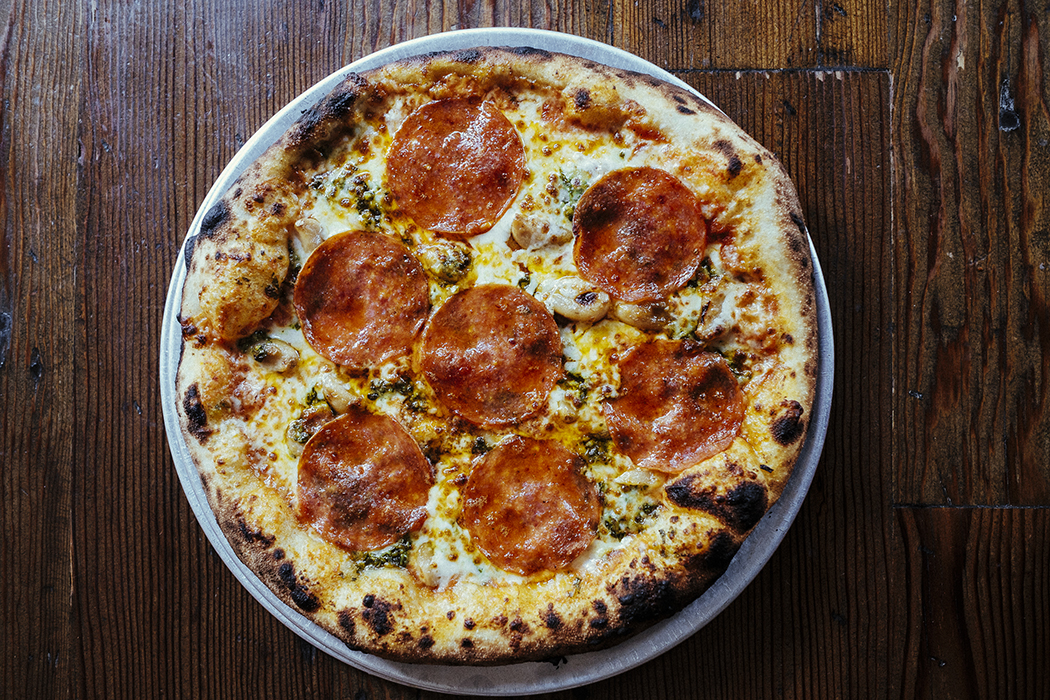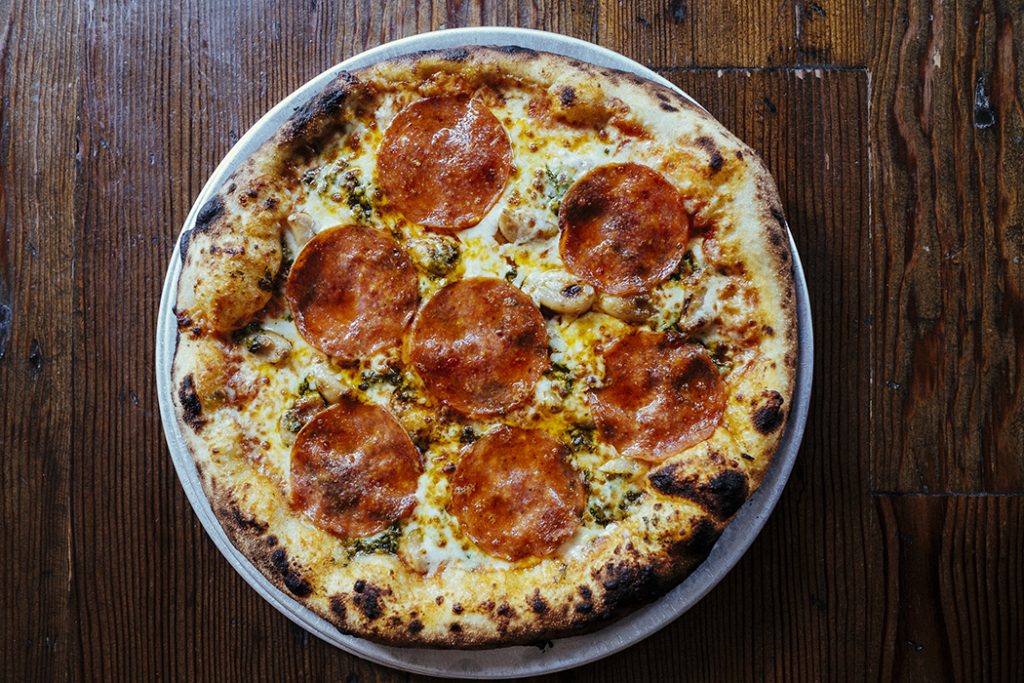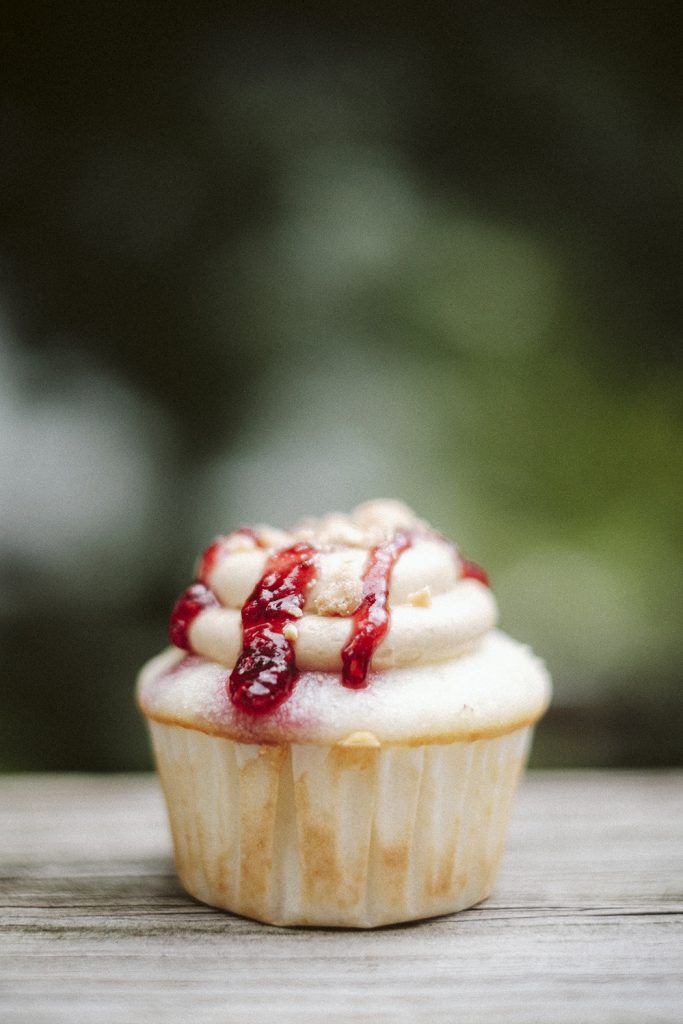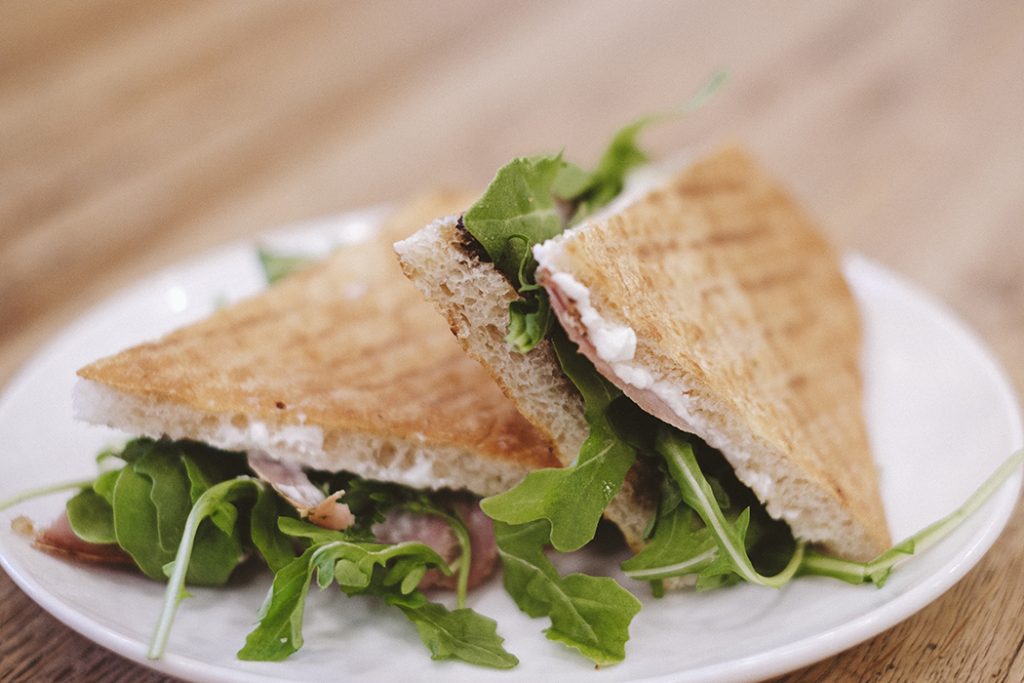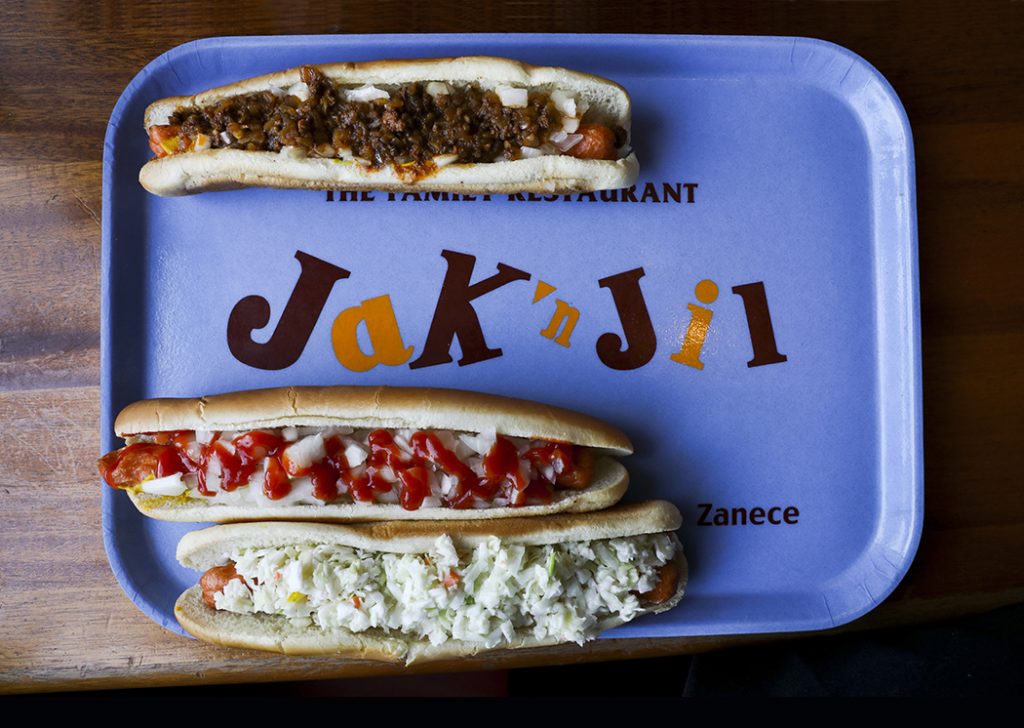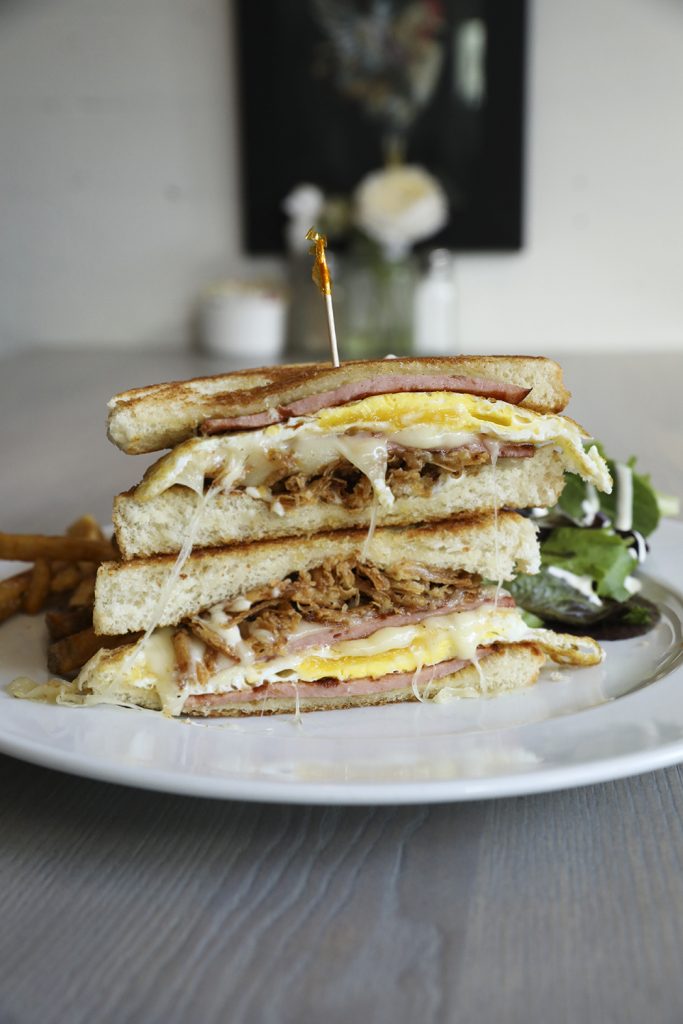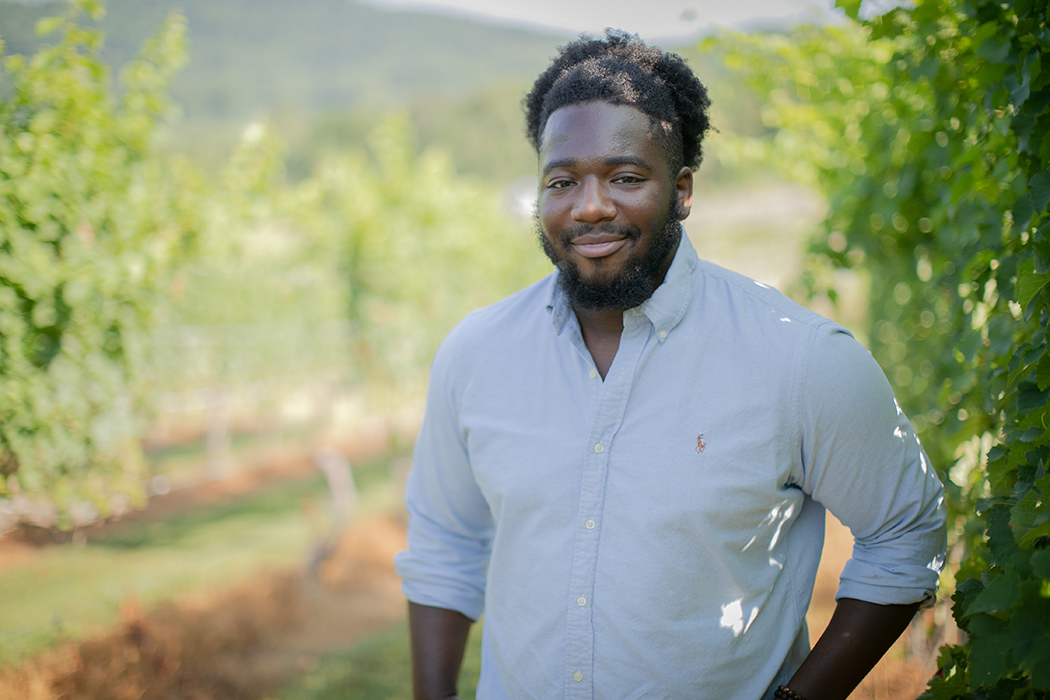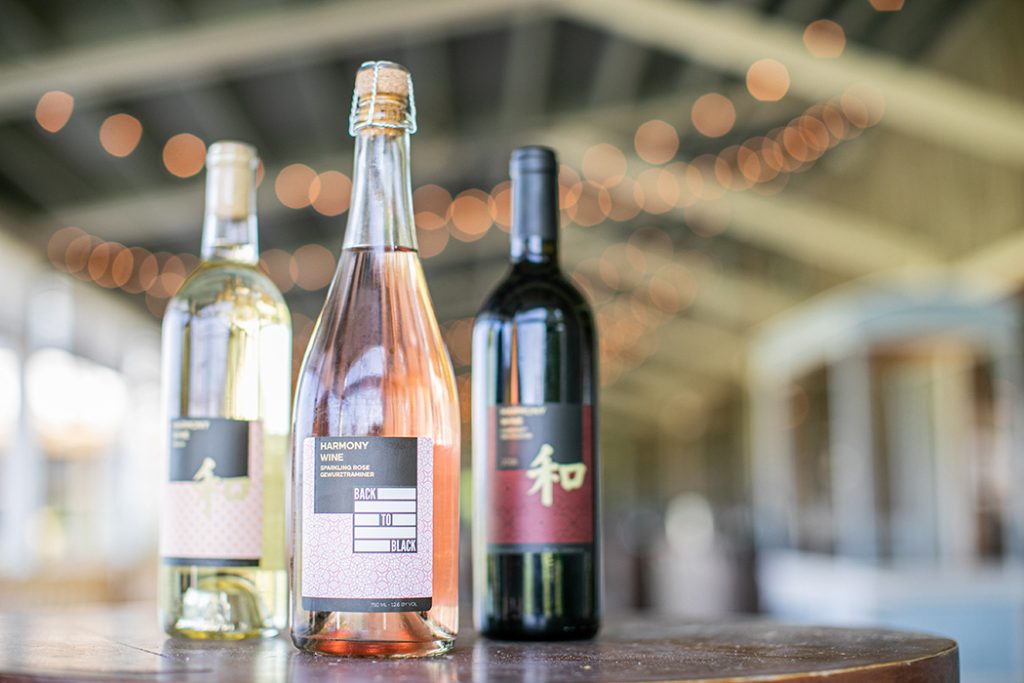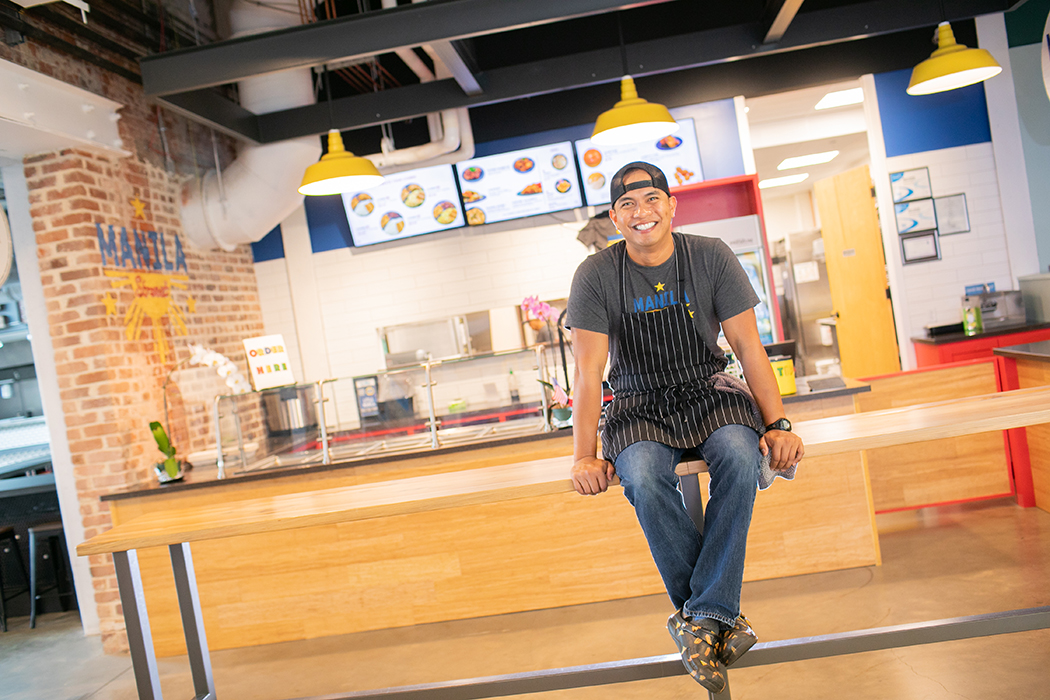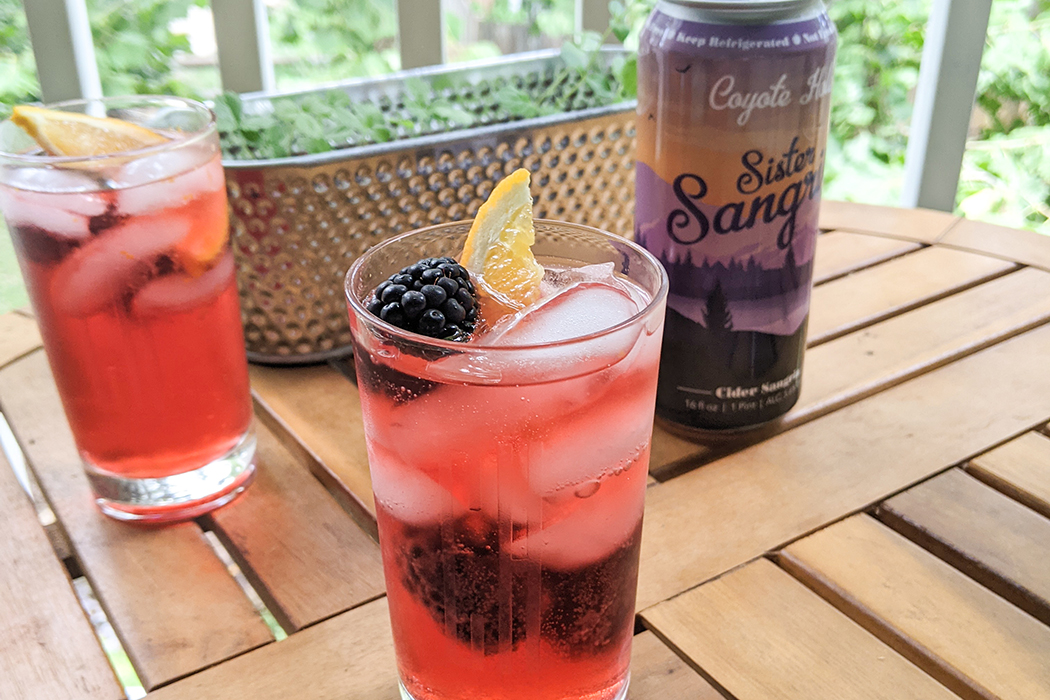Don’t call Carrie Waller an influencer. Even though the home blogger has upwards of 55k Instagram followers (@dreamgreendiy), she has a different take.
“I don’t love that term,” she says. “It has become kind of the standard for people in my industry, but I feel like it makes us sound very cold. I want people to be inspired by my work, not so much influenced.” Her home—a 1960s ranch in Waynesboro, where she lives with her husband and three cats—plays a big role in that. It serves as the backdrop for all of her DIY projects, from building a platform deck to making an air-dry clay diffuser, and eye candy for her interiors-obsessed followers.
The blogger’s mid-century aesthetic is obviously on-trend, but Waller puts her own spin on things, incorporating décor from other eras and, of course, her own handmade work. We asked her to tell us a little more about the solo-preneur life, a DIY fail, and—don’t worry—where she finds all the enviable pieces she puts in her home.
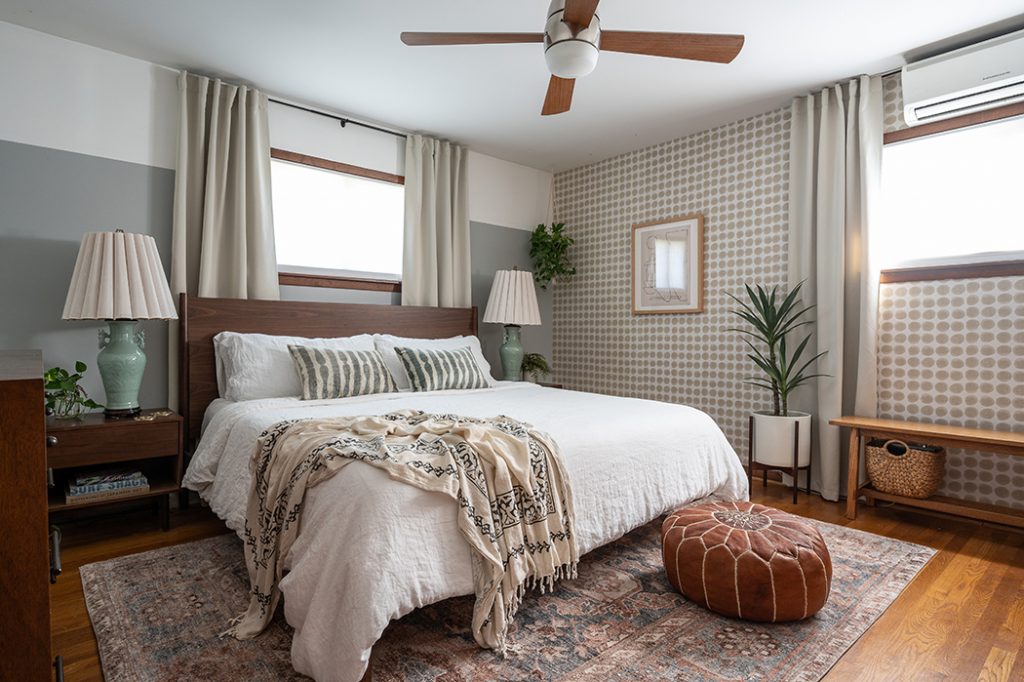
434: Tell me a little about your background and how it led you to start Dream Green DIY.
Carrie Waller: I’ve always been a hugely creative person. I remember I used to beg my mom to let me rearrange and redecorate my childhood bedroom every few months, and I still have that instinct now. I double-majored in studio art and art history in college, but ultimately felt disenchanted and beat down by the museum world when I tried to jump-start a career for myself in D.C. post-graduation. So, I moved home, and started completely over, getting a generic office job to pay the bills. It felt like rock-bottom, but it was during those years that I reconnected with my now-husband (we were friends in high school years ago), and I decided to start a blog to document the redesign of his bachelor pad.
Explain the name Dream Green DIY.
There was this one house in our neighborhood growing up that I absolutely adored. It was a big beautiful green Craftsman-style home, and I loved everything about it. As a teenager, I started calling it my “Dream Green.” It became this ideal version of the perfect house for me, so when it came time to pick a name for my blog, I went with my first thought, and it was, of course, about my “Dream Green.” I knew the content for my site was going to be all about DIY and building a home from scratch on your own, so it felt like the perfect title for my brand. I often worry that it doesn’t make much sense to people, but it means the world to me.

Describe your house for me—what it looks like and what you love about it.
When my husband and I got married, we settled into his bachelor pad, which was a small townhome in Lynchburg. It was a great space, but when it came time for us to find something new, we decided to really lean into our shared passion for mid-century design. We relocated to Waynesboro, Virginia, in 2015, and ultimately found the perfect 1960s gem to love. Only one other family had lived here since they built it in 1962, and it had been immaculately kept up. We are absolutely dedicated to retaining the mid-century charm of our 1,900-square-foot home. I love to plan room makeovers with the previous family who lived here always in the back of my mind. Would they appreciate the little changes we’ve made? Have we respected the original retro aesthetic? If I can answer “yes” to those questions, I know I’m on the right track.
How has your style evolved over time?
My interest in mid-century decor is something that is entirely my own, at least where my parents and little sister are concerned. No one else in my family has ever really incorporated that type of aesthetic into their spaces, so it feels unique to me (although, of course, it’s definitely not unique to me in the larger scheme of things since it’s a pretty trendy decor style right now!). I wasn’t always a mid-century enthusiast, though. My style growing up as a teenager, and later through college, was extremely colorful and handmade. I decorated very eclectic spaces filled with DIY art projects, mixed patterns, and hand-me-down furniture. It was a great time to experiment, and I’ve held onto that love for eclectic decor, but now it feels a lot more focused and probably a lot more mature.
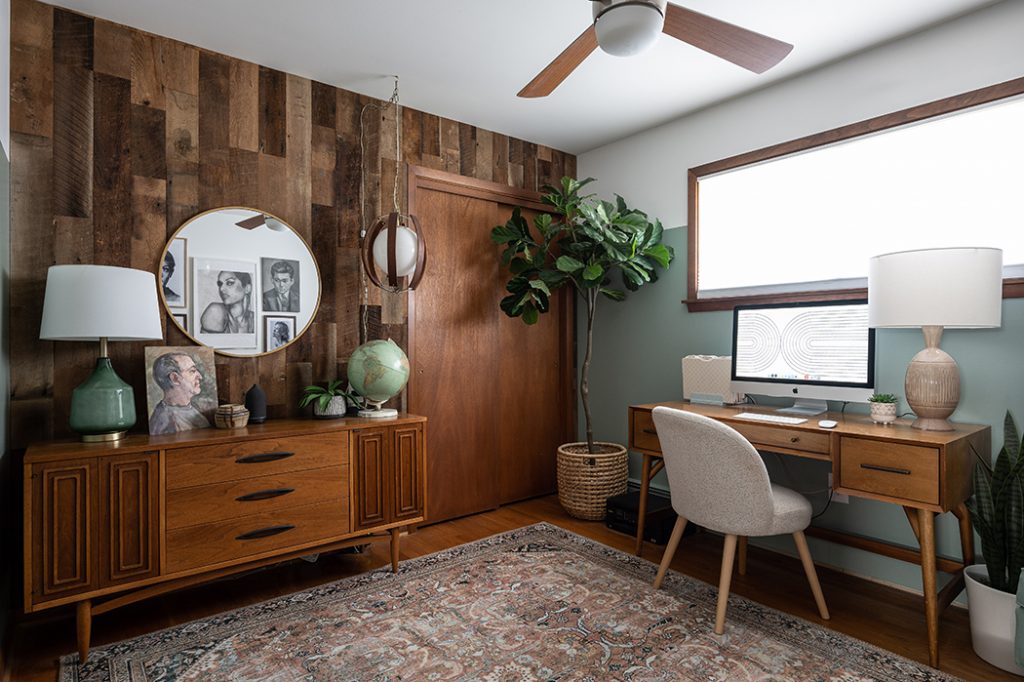
What’s the process like for bringing new things into a home you share with your husband?
Thank goodness for my husband… He’s so incredibly patient with me. I think he respects that this is more than just a passion and a job for me. It’s my life. I thrive on a beautiful paint color, cool retro antique find, and a cohesive color palette. He can see that I need to be doing this in order to feel fulfilled in life, so he is very supportive of my choices. That said, we still have a very collaborative process. If you were to follow us around at an antique store, you’d see me hold up various items to my husband and then you’d hear me ask him a quick, “Can I get this?” He usually says no, but every now and then he loves something I find, and that piece ends up being a shared favorite of ours. If I ever happen to bring something home that he genuinely hates (like the portrait painting of an old grumpy man that I bought on a whim on Etsy), I’ll usually put it in a room he doesn’t go in often, like my office, but I tend to eventually sell those pieces before too long. If he doesn’t love it as much as I do, then it doesn’t last in our home, but luckily, we generally gravitate toward the same things.
Where do you find inspiration? Other bloggers, media, books?
It sounds cliché, but my inspiration really does come from all over. I love watching movies from the 1950s and ’60s for authentic mid-century design inspiration (my favorite is Sunday in New York), and current design shows on TV help guide my decor instincts, too. Something as simple as wandering around antique stores also fills me with inspiration. I might happen to come across a cool retro table lamp that was placed by chance for resale on an end table with traditional turned wood legs, and suddenly an idea for a whole new room makeover comes to mind. Catalogs from my favorite home decor brands also spark lots of ideas. Just the other day I made a DIY art piece using paint leftovers because of a photograph I saw in a Lulu & Georgia catalog.

Tell me about a “pinch me” moment for your blog.
Hitting my 10-year blogging anniversary this past March was a big one for me! I’ll also never forget one evening about a year after starting my blog when my husband and I were lounging in our living room after dinner. I timidly brought up the idea of quitting the blog because I was feeling so insecure about how things were going. I was still working full-time in an office during the day, and dedicating every night and weekend to the blog. I was exhausted, and remember saying out loud to him, “If something big doesn’t happen this year, I think I need to start seriously considering letting it go.” A few months later, an email from Better Homes and Gardens popped up in my inbox. They wanted to do a feature about me in the magazine about a dresser I had made over using paint and a stencil. The dresser and I were photographed for the July 2012 issue of the magazine, and I’ve never thought about quitting the blog since then. It was the sign I needed to know I was on the right path.
Can you share a DIY “fail” you’ve experienced?
My DIY fails almost always have to do with paint. I appreciate that paint is such a great resource for changing up a room or piece of furniture, but I loathe working with it. I remember I tried to create a faux tile effect in our old kitchen using thin masking tape and paint. I spent hours on it, and even roped my sister into helping me meticulously lay the tape in place. I painted over the tape, and when I went to remove the tape layer, all of the paint peeled off in giant sheets. It wasn’t a good evening. Moments like that really make you appreciate the projects that go right, though.

What’s next for Dream Green DIY/your home?
It seems like 75 percent (or more!) of the news headlines these days are focused on climate change and the negative impact we’re having on the environment. It has really gotten me thinking about what changes I can make personally and professionally. I know I can’t change the world with my little blog, but I want to do all I can to help center the conversation on what we can be doing as homemakers to help support the planet. I’m planning on shifting the focus of my work to sharing teachable moments built on the concepts of sustainability and recycling. It feels like a natural extension of my brand since most people assume the “green” part of my blog name is actually about recycling, so I plan to really dive down deep into that conversation. I want to lead by example by shopping less in general (and when I do, to focus on longevity), opting for secondhand decor whenever possible, and providing inspiration for environmentally friendly cleaners, too. Again, I know I don’t have the power to start a crusade (I’m a hardcore introvert, after all), but I can start small and I can start somewhere.
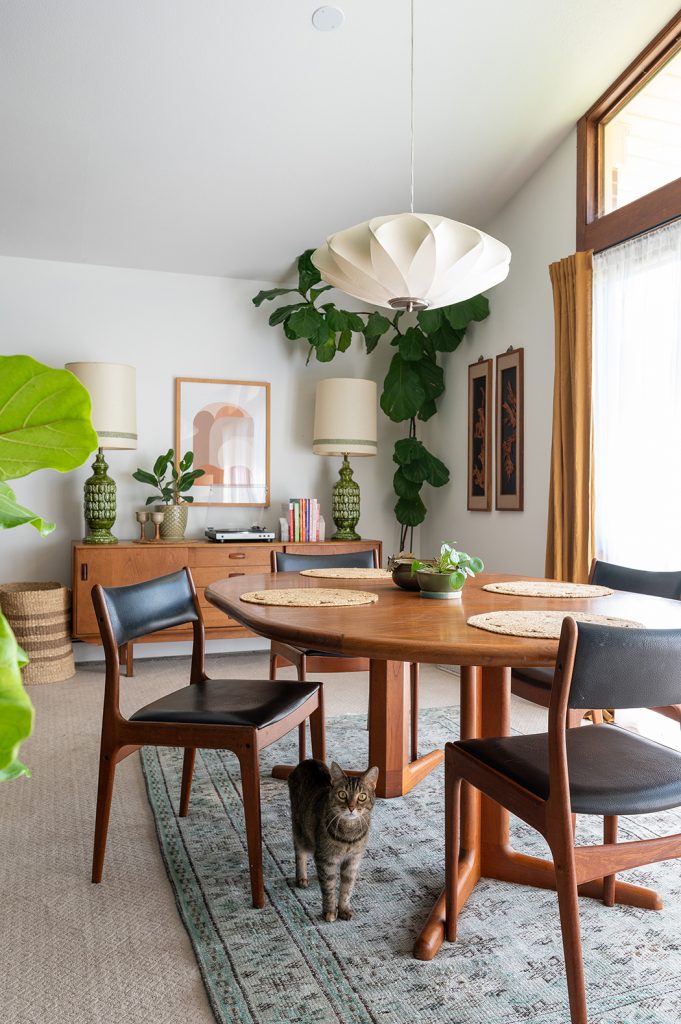
QUICK-FIRE
Favorite DIY project to date: The DIY platform deck we just built in our backyard! We completed it just this August, and it has really helped expand the livable footprint of our home.
Most treasured thrifted item: The secondhand mid-century starburst clock my husband and I found together (for just $12!) when we were still dating.
Favorite place to source vintage pieces: Circa in Charlottesville is one of my favorite resources. I go a few times a month because they always have new treasures to look through. Half of our house has been furnished and decorated with pieces I’ve found at Circa. The same goes for Galaxie Modern in Bedford, Virginia. I also love Greenwood Antiques & Uniques in Greenwood.
Currently on your wish list: New windows. I know that’s not the “sexy” answer, but I daydream about getting new windows for our very energy-inefficient mid-century home.
Favorite corner of your home: The dining room. My husband and I eat dinner together there every night, and it’s so gratifying to be able to look around at this home we’ve created. Our pets are constantly running around at dinner time, too, so our dining room is full of laughter. It’s my favorite corner, and my favorite time of day.

